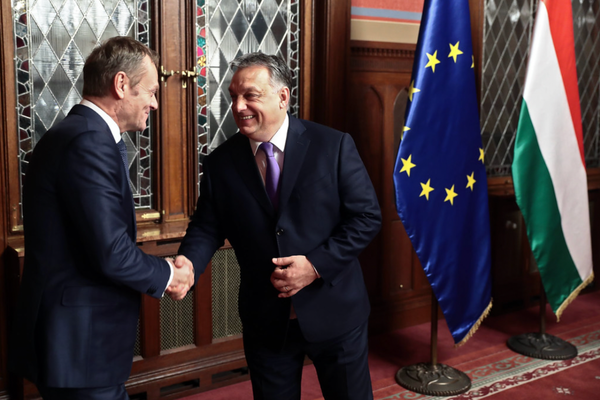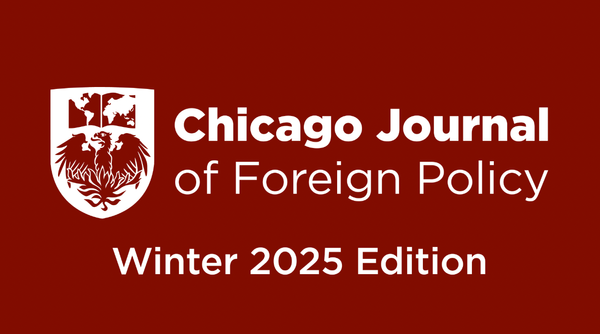The U.S. should let the IMF should bail out Pakistan. Here's why.

by JOSH ZAKHAROV, ’20
Last week, Secretary of State Mike Pompeo announced in an interview with CNBC that the United States would oppose a hypothetical International Monetary Fund bailout of Pakistan’s $12 billion debt to China. “We will be watching what the IMF does,” said Pompeo, as “there’s no rationale for IMF tax dollars — and associated with that, American dollars that are part of the IMF funding… to bail out Chinese bondholders or China itself.”[1] Pompeo has a point. The United States, and Pompeo’s State Department in particular, have been taking steps to counterbalance China’s massive Eurasian infrastructure development projects – the Belt and Road initiative – by boosting our economic engagement with countries China has been targeting. If we’re trying to contain a growing Chinese sphere of influence, why would we pay their bondholders billions of dollars?
The alternative, however – letting Pakistan sort its debt out without the IMF – is more dangerous for the United States’ objectives in Central and South Asia than indirectly paying China is, and in the long-term, more dangerous for Pakistan. If Pakistan ends up defaulting on its loans to China, or is at risk of doing so, China can relegate Pakistan – a nation with the world’s fifth-largest military, fifth-largest population, and sixth-largest nuclear arsenal – to the status of debt peonage to which it has relegated Sri Lanka and to which it will soon relegate Djibouti. Economist Panos Mourdoukoutas calls what China did in Sri Lanka establishing a “semi-colony,” and Amy Cheng of Foreign Policy argues that Djibouti is headed Sri Lanka’s way.[2] [3]
In Sri Lanka, Chinese Belt and Road projects ran Sri Lankan debt to China up to $8 billion with interest rates as high as 7%, to the point that debt financing ate up nearly 95% of Sri Lanka’s annual revenue. In response to Sri Lanka’s clear inability to fully pay China back, China demanded a 70% stake in and a 99-year lease on the Sri Lankan Port of Hambantota. The port, standing at a cost of around $1.5 billion, is the centerpiece of China’s investments in Sri Lanka. It’s a part of the widely suspected Chinese grand strategy of building a “String of Pearls” of potential naval bases across the Maritime Silk Road. Though Sri Lanka has made it expressly clear that it would oppose China using Hambantota as a naval base, American, Japanese, and Indian intelligence all suspect that China may do so.
Djibouti is in a similar boat, having taken on massive debt to China’s Exim Bank to finance projects like a $3.5 billion Chinese-sponsored “international free trade zone” network of ports and trade infrastructure and a massive Chinese naval and military base 6 miles from America’s largest AFRICOM base, Camp Lemonnier. The Center for Global Development estimates that these ventures are largely responsible for bringing Djibouti’s public debt up from 50% to 85% of its GDP.[4] Cheng suggests that China may, in response to Djibouti’s inability to pay off debt, make Djibouti sell off Camp Lemonnier to the Chinese military or otherwise stifle the counterterrorism and AFRICOM-based operations the United States runs from the country.
What’s happening in Sri Lanka, Djibouti, and Pakistan is by no means isolated. Of the 68 countries hosting Belt and Road projects, the Center for Global Development finds that 23 are already in significant debt, and of those 23, eight are at risk of debt distress from Belt and Road investments alone. The loans on Pakistan, as with other high risk countries, have astronomically high interest rates (of up to 7%), and will require Pakistan to spend almost 1% of its GDP every year paying back China.
If Pakistan defaults on its debts, China could conceivably pull any of the same strategies it did in Djibouti and Sri Lanka to pay itself back. They could claim the trade infrastructure and ports of the city of Gwadar (some of which they have already leased long-term) or other bases throughout Pakistan, disrupt the regional naval presence of the Quadrilateral Security Dialogue (India, the U.S., Japan, and Australia), extract revenue and tolls from all critical Pakistani trade nodes, and hold a greater sway over Pakistani foreign policy than the United States has. The U.S. needs to continue pressuring Pakistan to stop sheltering violent non-state actors like the Taliban,and Haqqani Network; to mitigate the loss of American aid money to corruption; and to secure its nuclear arsenal better. It loses critical leverage on these goals to China in a world where Pakistan remains billions of dollars in debt to them.
This is where an IMF bailout comes in. If the United States is committed to preventing Pakistan from becoming a Chinese client state, and recognizes that by Khan’s asking for an IMF bailout, Pakistan has no intention of becoming a Chinese client state, it ought to facilitate the bailout. In the long run, the cost of the concessions to American security objectives in South Asia and the Indian Ocean will eclipse the $12 billion or so one-time debt relief.
The reason an IMF bailout is preferable to, say, OPEC debt relief, or other single countries financing Pakistan’s debt, is because IMF loans have the advantage of conditionality. There’s a litany of terms the IMF could propose on the bailout that they offer to Pakistan to accomplish the primary goal of loan conditionality – namely, keeping a country out of the conditions that made them have to take out the loan in the first place. Examples of effective terms include: mandating IMF preclearance for future multibillion dollar loans, requiring Pakistan to secure approval from the IMF before taking out loans of the sort that it took from China; mandating that Pakistan not accept loans of a certain size or certain interest rate; having Pakistan boost social spending and reduce debt servicing as a portion of its budget; and so on. The IMF is one of the few organizations that has an interest in a financially sustainable, independent Pakistan.
Imran Khan, starting as Pakistan’s leader with this Sword of Damocles of Chinese debt over his head, has only two options – to take the IMF bailout and sheath the sword, or let China cut the string the sword is hanging by. We shouldn’t force Khan into the second.
Works Cited
[1] “Pompeo Warns against IMF Bailout for Pakistan That Aids China,” CNBC, Reuters, 31 July 2018. Web. www.cnbc.com/2018/07/31/reuters-america-update-2-u-s-pompeo-warns-against-imf-bailout-for-pakistan-that-aids-china.html
[2] Mourdoukoutas, Panos. “What Is China Doing To Pakistan? The Same Thing It Did To Sri Lanka,” Forbes Magazine, 15 April 2018. Web. https://www.forbes.com/sites/panosmourdoukoutas/2018/04/15/what-is-china-doing-to-pakistan-the-same-thing-it-did-to-sri-lanka/#6273e3a8ff53
[3] Cheng, Amy. “ Will Djibouti Become Latest Country to Fall Into China’s Debt Trap?,” Foreign Policy Magazine, 31 July 2018. Web.
https://foreignpolicy.com/2018/07/31/will-djibouti-become-latest-country-to-fall-into-chinas-debt-trap/
[4] Morris, Scott. “China’s Belt and Road Initiative Heightens Debt Risks in Eight Countries, Points to Need for Better Lending Practices,” Center for Global Development, 4 March 2018. Web. https://www.cgdev.org/article/chinas-belt-and-road-initiative-heightens-debt-risks-eight-countries-points-need-better





